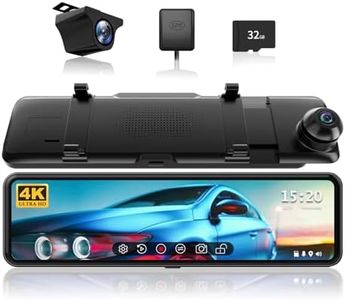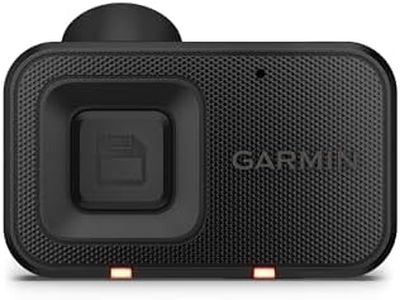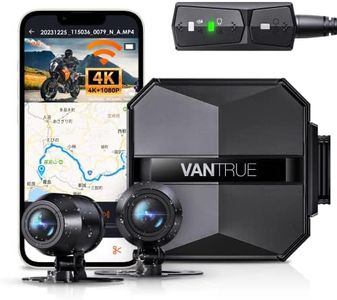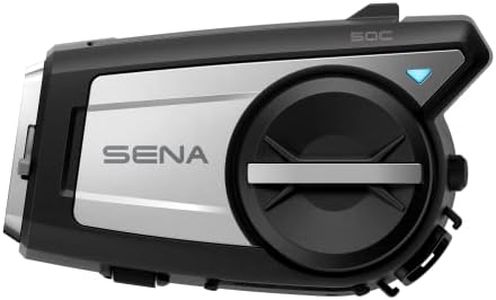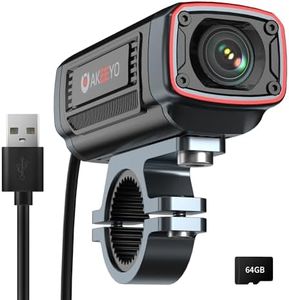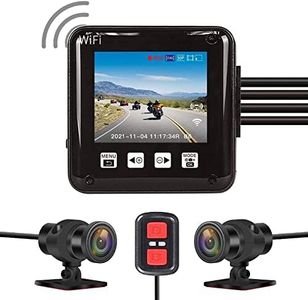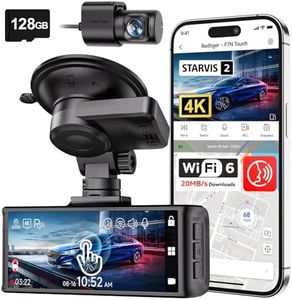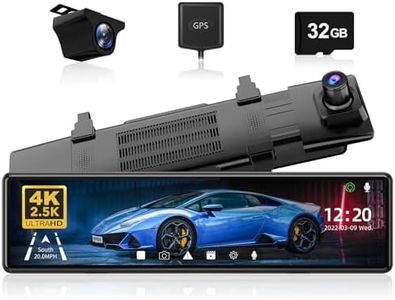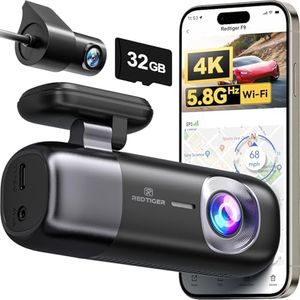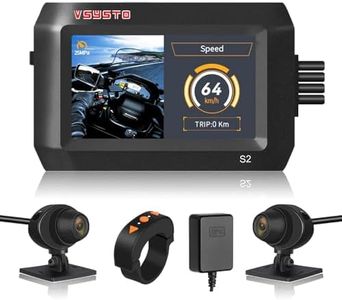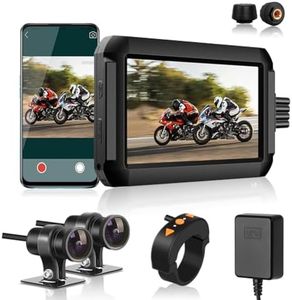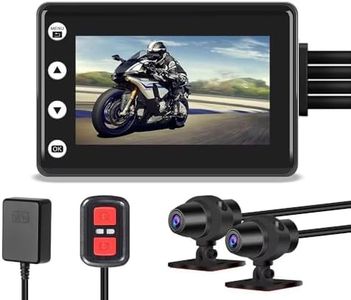We Use CookiesWe use cookies to enhance the security, performance,
functionality and for analytical and promotional activities. By continuing to browse this site you
are agreeing to our privacy policy
10 Best Dash Cam For Motorcycle
From leading brands and best sellers available on the web.Buying Guide for the Best Dash Cam For Motorcycle
Choosing the right dash cam for your motorcycle is all about prioritizing safety, usability, and durability. Because motorcycles face different conditions than cars—like exposure to weather, vibration, and limited mounting space—you should look for features that ensure both reliable recording and long-term use. Start by considering how and where you'll ride: long trips, city commuting, or occasional tours. Think about your need for evidence in case of accidents, recording your adventures, or security when parked. Let your specific riding habits help shape your choices, and always opt for a product built for motorcycle conditions.Video ResolutionVideo resolution refers to the clarity and detail of the footage the dash cam records. Higher resolution means more detail, which is crucial for capturing important details like license plates or street signs in case of incidents. Most motorcycle dash cams come in 720p (HD), 1080p (Full HD), or 4K. 720p offers basic quality and may suffice for simple evidence, but can struggle in low light or fast motion. 1080p is a good all-round choice, balancing detail and storage space. 4K gives exceptional clarity, which is useful for those who want the sharpest image, but it creates larger files and needs more memory. Choose the highest resolution that fits your needs for identification and storage management.
Durability and WeatherproofingMotorcycle dash cams must withstand rain, dust, wind, and vibration. Durability is often indicated by the cam’s build quality and its Ingress Protection (IP) rating—look for terms like IP65, IP67, or IP68, which denote increasing levels of water and dust resistance. If you ride in all weathers, especially heavy rain or off-road, prioritize a higher IP rating. For occasional, fair-weather riders, a moderate rating may be enough. Always pick a dash cam labeled for outdoor or motorcycle-specific use to avoid issues with moisture and road debris.
Mounting Options and SizeMounting is about how easily the dash cam can be attached to your bike and how unobtrusive it will be during rides. Some cameras are designed for helmets, while others are fixed to the handlebars or bodywork. Compact designs reduce wind drag and are less likely to be noticed by thieves. If you prefer a permanent setup, look for solid, vibration-resistant mounts, whereas riders who want flexibility may go for quick-release or helmet-mounted units. Consider your bike’s available space and how much you’re willing to modify it.
Field of View (FOV)Field of View describes how wide an area the camera can capture at once, measured in degrees. A wider FOV (e.g., 140°-170°) can capture more of the action, making it useful for recording incidents from multiple angles or scenery during rides. However, overly wide FOVs can sometimes distort the image at the edges. If your main goal is to gather evidence in an accident, pick a moderate FOV (around 120°-140°) for a natural-looking recording. For adventure recording, go wider, but be mindful of distortion.
Loop Recording and StorageLoop recording means the camera overwrites the oldest files when memory is full, so it keeps recording without manual intervention. Most dash cams use microSD cards for storage, with support for different sizes (e.g., 32GB, 64GB, 128GB). If you record in high resolution or for long periods, choose a camera with support for larger cards. Ensure the camera’s loop recording is reliable, so you never miss crucial moments. If you plan on saving longer rides for personal use, consider transferring files regularly to larger external storage.
Power Supply and Battery LifeDash cams for motorcycles can be powered either by internal batteries or by connecting directly to your bike’s power supply. Battery-powered units offer portability and simplicity but may not last for very long—usually around an hour or two. Hardwired cams draw power from the bike and can record as long as the engine runs, making them ideal for all-day rides or frequent use. Choose a battery-powered one for short trips or if you prefer portability; go for a hardwired solution for longer rides or convenience.
Night Vision CapabilityNight vision allows the dash cam to record clear footage in low-light conditions, which is crucial if you ride at night or in poorly lit areas. This feature is typically provided by specialized sensors or built-in infrared lights. Basic cams may struggle after dark, while models with true night vision will show clearer images of roads and traffic. Decide how often you ride at night: if it’s frequent, invest in a camera with strong night vision performance; if you rarely ride after dark, a basic level may suffice.
G-Sensor and Incident DetectionA G-Sensor detects sudden movements, such as an accident or hard braking, and automatically locks and saves the corresponding video file to prevent it from being overwritten. This is important for protecting crucial evidence. Sensitivity can sometimes be adjusted; high settings can capture even minor bumps, while lower settings might avoid false positives. If your main priority is accident evidence, make sure your dash cam has a reliable G-Sensor, and adjust its sensitivity to your riding environment to avoid missing or wasting storage on accidental triggers.
